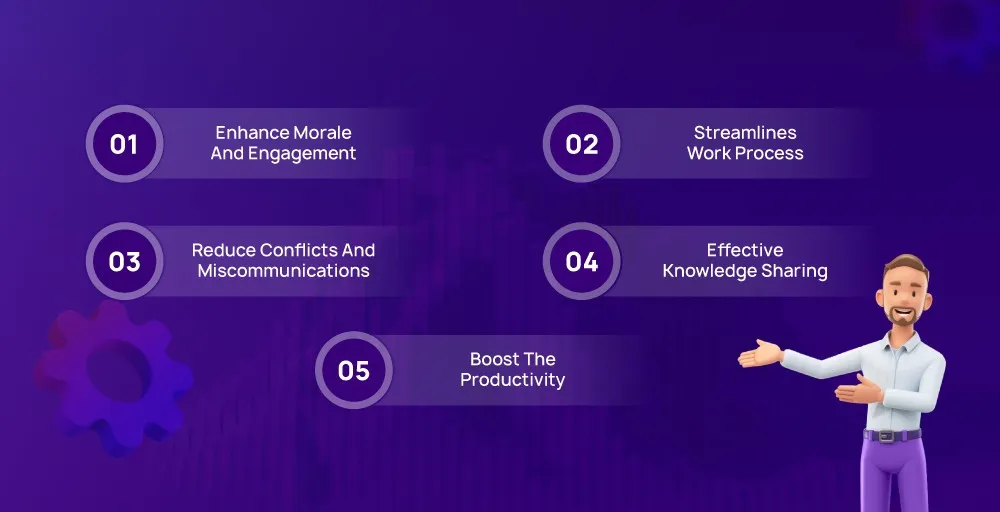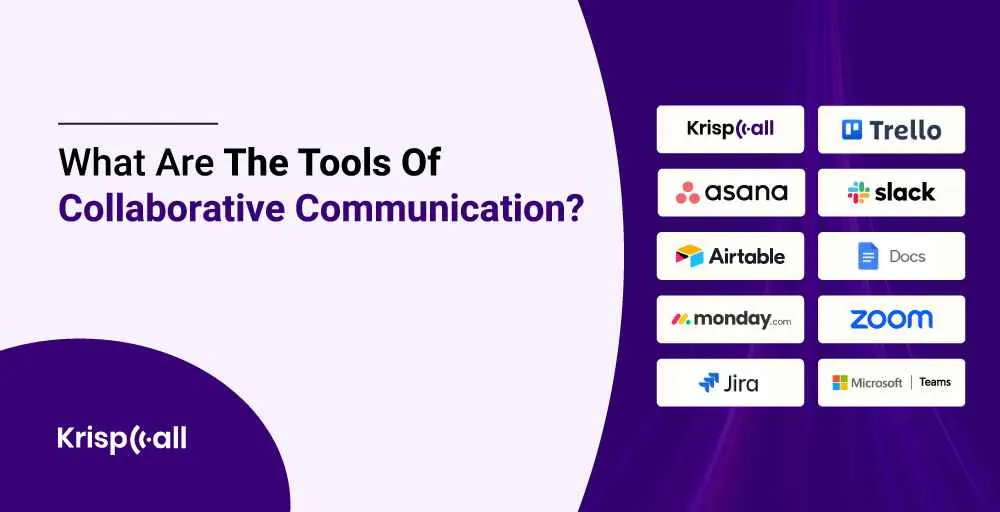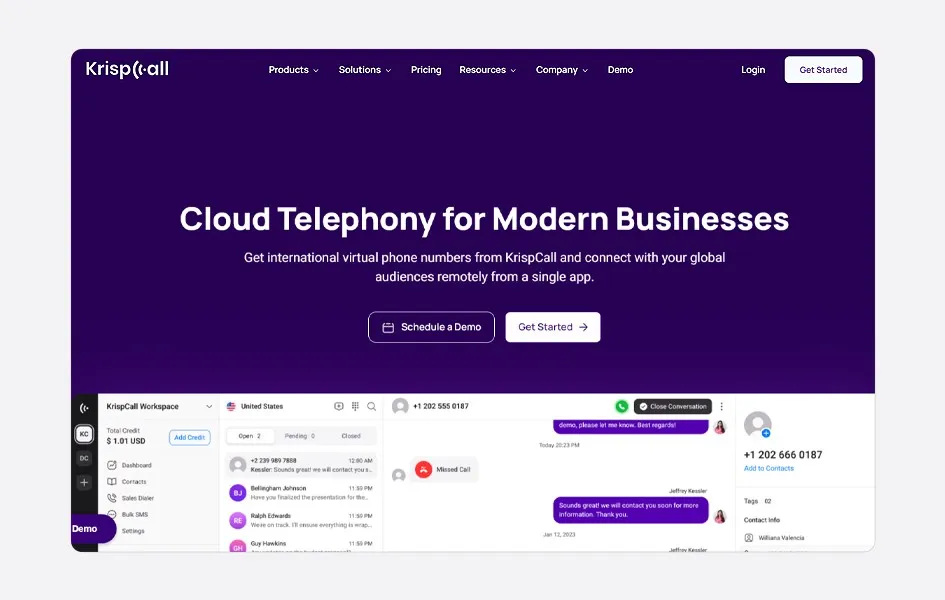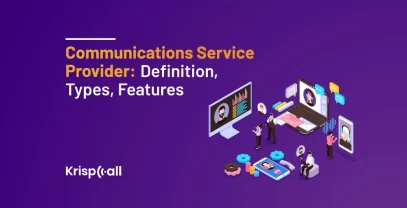Have you struggled to track task performance and progress 📊of team members? Are you trying to foster seamless communication in your 🏢 workplace?
Collaborative communication is the secret solution to improving communication between team members. It involves exchanging information and discussing topics as a team to achieve a common goal. It promotes transparency and encourages employees to express their ideas openly. As a result, collaboration and communication improve engagement and reduce conflicts and miscommunication.
But how does it do that? 🤔
In this blog,✍️ we will explain details about collaborative communication and how to do it right to build a culture of collaboration communication and enhance the team’s performance.
🔑KEY HIGHLIGHTS
- Collaborative communication enhances team morale and engagement, streamlines the work process, and reduces conflicts and misunderstandings.
- Building a culture of collaborative communication inside your team involves choosing a single source of truth, collaborating on each agenda, investing in open and transparent communication, and leading by example.
- Some examples of collaborative communication include using multiple communication channels, empowering cross-functional teams, and establishing collaborative customer service.
- The skills required for effective collaborative communication are active listening, communication etiquette, conflict-solving abilities, decision-making, and time management.
- Some collaborative communication tools include KrispCall, Slack, Trello, Asana, Airtable, Google Docs, Monday.com, Zoom, Jira, and Microsoft Teams.
So, let’s get started.🚀
What Is Collaborative Communication?
Collaborative communication is a type of communication that involves two or more individuals working together to achieve a common goal. This strategy emphasizes active listening, mutual respect, open communication, and promoting an environment where all individuals feel heard and valued.

Feedback is crucial in collaborative communication; we build harmony rather than create conflict. This fosters a work environment where cooperation and mutual support lead to better outcomes and a more cohesive team.
Effective collaborative communication and customer service skills are essential for building strong relationships and ensuring customer satisfaction.
Examples Of Collaborative Communication
Example 1: Using Various Communication Channels
It has been revealed that most teams employ hybrid enterprise communication tools. It is unusual for a team to interact exclusively with coworkers via instant messages, video calls, or project management tools. Instead, they use channels tailored to different tasks and contexts.
It is important to be conscious of which platforms to engage with depending on the task, such as following up with a colleague or seeking an update on a project. For instance, when you require assistance from one of your teammates about a particular blog post, you will use Slack to reach out to them when they are at work. Besides, you will also ensure that when you send the message, it is when you know the other members are online and in their office time.
Similarly, for basic queries, you will call them when you need to discuss something rather than go through emails to find the particular message in their messaging section of Slack. Slack also has a Sidebar feature that is like an accommodation for a temporary chat room, where we do not need to set up a formal meeting to discuss a simple issue.
Example 2: Empowering Cross-Functional Teams
Leading a remote-first team can be challenging, but it becomes even more complicated when the team is cross-functional. Different departments often use a wiki or intranet to search for organizational charts, strategies, and advice on working together. While this is helpful, implementing a project requires a different approach.
For instance, in a healthcare clinic, secretaries make appointments and remind patients, doctors treat clients, and other service providers who interface with the clinic are outsiders known as agents, such as laboratories and pharmacies. Contact centers associated with healthcare organizations also handle many patient communications.
Here are two collaborative communication examples in a healthcare setting:
- Rescheduling an appointment: An office manager receives a phone call from a patient who has an urgent matter to attend to before coming to the office and has to reschedule an appointment. They then proceed to message the physician about the change.
- Coordinating a blood test: A physician visits a patient, completes the consultation, and then briefly messages the office manager to schedule a blood test. The office manager dispatches the sample and then calls the lab.
These examples highlight the importance of interdisciplinary cooperation, which is increasingly common in today’s professional landscape.
Example 3: Establishing Collaborative Customer Support
People dealing directly with customers require good teamwork, especially when dealing with customers with complaints. Good enterprise communication tools are important in resolving calls as they solve them faster, decrease AHT (Average Handling Time), and satisfy customers.
Support teams may have a diverse skill set and may include experienced and inexperienced personnel stationed anywhere in the world. To and for all support team members are connected to a central communication tool where they can contact other departments, such as IT or Sales, for particular inquiries.
For instance, the CSR can consult a billing specialist and a technical professional through Slack when encountering a billing question or error in an order. The two professionals resolve the problem for the client without delay. This excellent synergy reduces the Average Handling Time (AHT) and delivers the customer on a high note with prompt resolution.
What Are The Benefits Of Collaborative Communication?
Collaborative communication is crucial in the workplace to enhance team collaboration communication and teamwork, boost performance, improve adaptability, and drive a business to success and innovation.
Here are some key benefits that collaborative communication offers to a business:

1. Enhance Morale And Engagement
When all team members are involved in decision-making, problem-solving, ideas, and knowledge sharing, employees feel valued, belong, and are motivated.
It reduces miscommunication, conflicts, and disappointments, resulting in a smoother working environment and higher engagement and satisfaction among team members.
2. Streamlines Work Process
Collaborative communication streamlined work processes, allowing better coordination and information or file sharing among team members. It prevents misunderstandings, minimizes task duplication, and ensures the alignment of objectives among team members.
Additionally, it allows for tracking teams and facilitates problem and conflict resolution. It fosters transparent work progress and smoothens the work process.
3. Reduce Conflicts And Miscommunications
In a collaborative environment, all team members are in the same phase. This means every team member can access documents, files, updates, new decisions, etc., eliminating miscommunication and reducing conflicts.
Also, every team member can be involved in the decision-making process. They can share their views and opinions regarding a subject matter, increasing the sense of belongingness and motivating the employees.
4. Effective Knowledge Sharing
Collaboration allows for open communication and the sharing of knowledge, ideas, opinions, and suggestions among team members.
By openly communicating and exchanging information, team members can leverage each other’s experiences and insights, ultimately benefiting the entire organization.
5. Boost The Productivity
Collaborative communication offers a streamlined workflow, which increases employees’ performance efficiency. It helps coordinate with team members to align and achieve a goal.
With communication and collaboration, team members can make quick decisions, solve problems efficiently, share knowledge, and reduce misunderstanding, which leads to higher productivity and quicker task completion.
How To Build A Culture Of Collaborative Communication Inside Your Team?
To build a culture of collaboration and communication inside your team, follow these steps:
1. Choose A Single Source of Truth
A single space for storing files and conversations is essential in collaborative communication. Hence, you should create a single platform or space for all necessary documents, knowledge, files, and conversations. This guarantees every team member access to up-to-date project details and knowledge.
A single source of truth (SSoT) in collaboration encourages team members by allowing them to access each other’s efforts and necessary documents. It stops searching for information and saves time.
2. Collaborate On Each Agenda
You should ensure all team members have collaborative agendas aligning with the project/task goals and objectives. A collaborative agenda helps create a culture of communication and collaboration by facilitating real-time collaboration, transparent communication, better decision-making, and improved teamwork.
3. Edit Documents Together In Real-Time
Access to editing the same documents by multiple member teams simultaneously can create a collaborative communication culture. So, use a tool that enables all team members to edit the document together in real time.
This offers transparency in files and documents, allowing you to see the changed and historical versions, comments, etc. It also allows comments on task assignments to change in real-time.
4. Invest In Open And Transparent Communication
You can build a culture of collaborative communication by using open and transparent communication tools such as Slack, Trello, Notion, etc. These tools can streamline the work process and increase the performance efficiency.
In collaboration, effective communication is a must to avoid miscommunication and conflicts. You should focus on the importance of clear and quick communication and invest in open and transparent communication to build trust and create a culture of collaborative communication inside your team.
5. Lead By Example
The team leader should maintain collaborative communication etiquette, design collaborative behaviors, and teach them with examples and demos. Leaders influence the overall workplace culture, so they should maintain proper communication strategies such as active listening, open-mindedness, creativity, use of technology, confidence, etc.
Also, a leader should continuously improve their behaviors and seek feedback from their team members. This encourages collaboration among team members to learn and grow like leaders.
What Are The Collaborative Communication Skills?
Here are the top 10 skills needed to support collaborative communication:

1. Active Listening Habit
Collaboration involves two or more people, so an active listening habit is essential to listen to other views and respect their opinions.
People may have different perceptions and opinions, so active listening habits in collaborative communication can reduce conflicts and arguments.
2. Communication Etiquette
Communication etiquette is a good and accepted way of communicating with other team members. Proper communication skills and etiquette can develop a positive relationship.
Communication Etiquette includes active listening, maintaining eye contact, expressing kindly, and using a soft tone while communicating through phones, emails, and texts.
3. Conflict-solving Abilities
Conflicts may arise in the workplace for various reasons. Team members’ different personalities and opinions may create arguments that turn into toxic collaborations.
So, conflict-solving abilities must require skills in collaborative business communication. They must be able to analyze a situation and solve problems and conflicts without bias.
4. Open-minded
Teamwork involves two or more people, so you must be open-minded and open-minded to accept different ideas, visions, perspectives, and opinions in collaborative communication.
This helps teams to see new possibilities for different approaches, which help to bring innovative solutions for problems and grow your business rapidly.
5. Relationship Building
A positive relationship is essential for collaborative communication. Without a good relationship, there will be a lack of engagement, inefficient performance, and conflicts may arise.
Understanding other people’s points of view, communicating in soft tones, and respecting decisions and feedback help build positive relationships between team members.
6. Organization And Delegation
Organization is another skill in collaborative communication, especially in hybrid and remote work. You must be able to plan and organize the schedule of your own tasks and delegate tasks to others.
Without the organization of tasks, it leads to the double assignment of the same task, missed deadlines, and slowing down the whole progress of the task. So, for effective collaboration and communication, you must have organization and delegation skills.
7. Confidence
Confidence is essential for collaborative communication. Team member must have the courage to stand up for themselves and their ideas and opinions. Confidence empowers them to express their ideas, opinions, and knowledge.
When team members are confident, they can show interest in discussion and decision-making processes, which brings more knowledge and solutions. In addition, confidence improves a collaborative environment in the workplace.
8. Decision Making
Collaborative communication involves making a collective decision to achieve organizational goals and objectives. Therefore, decision-making skills are required in collaborative communication. It helps in problem-solving and aligning team efforts with organizational goals.
Moreover, decision-making allows team members to handle conflicts and balance views and ideas. Decision-making skills can help make better decisions and enhance the overall effectiveness of collaborative communication.
9. Adaptability
Adaptability means accepting and adjusting in response to new activities, methods, technology, situations, and processes. You must adapt to change to communicate with team members, increase productivity, and tackle challenges.
This means being open-minded, positive, actively listening, accepting change, continuously learning skills, and gaining knowledge. These skills can act as a bridge between knowledge and contributions to the company to enhance overall team effectiveness.
10. Time Management
Time management is an important skill required in collaborative communication. It refers to the skills that ensure team members can use time more efficiently for different tasks, meetings, and other activities.
With time management skills, team members can effectively manage time, meet deadlines, and use available time for collaboration without disturbing workflow. Effective time management eliminates delays in meeting deadlines.
Best Tools For Collaborative Communication: Top Apps & Software To Consider in 2024
Collaborative communication is essential in today’s business environment. The best enterprise communication tools are crucial in enhancing collaboration ensuring that team members stay connected and productive.
Here are some key tools of collaborative communication:

1. KrispCall – Best for Collaborative Communication
KrispCall is one of the most effective cloud telephony solutions for connecting consumers and teams. It has powerful features that are ideal for high-growth companies and organizations.
KrispCall as a collaboration and communication platforms
KrispCall’s telephony software works flawlessly across multiple devices, laptops, desktops, tablets, and smartphones. KrispCall is a leading communication platform that separates out for its rich feature set, versatility, and scalability. It simplifies communication, making sales, customer service, and other company contacts more efficient.

KrispCall combines dependability, worldwide accessibility, and innovative functionality, making it suitable for modern enterprises looking for integrated phone solutions.
Let’s know its essential features and benefits.
🌟 Features
- Integration with CRM Software and Business Tools: Seamlessly connect your communication with customer relationship management (CRM) systems and other business tools. This integration ensures a holistic view of interactions and enhances customer service and automation of internal processes.
- Unified Callbox: A centralized hub for managing calls, voicemails, and messages. Stay organized and never miss important communications.
- SMS Capabilities: KrispCall supports SMS notifications and messaging, enabling quick communication with clients and colleagues.
- Interactive Voice Response (IVR): Set up automated menus for callers, directing them to the right department or information.
- Shared Phone Number: Share a single phone number across team members, streamlining communication and maintaining consistency. KrispCall offers comprehensive features to enhance business communication, boost productivity, and improve customer interactions.
💫Benefits
- Global Reach: KrispCall offers virtual phone numbers from over 100 countries, allowing businesses to expand their global presence effortlessly. Whether you need a local, mobile, or toll-free number, KrispCall covers you.
- User-Friendly Interface: KrispCall’s intuitive design reduces the learning curve, making it easy for all team members to use.
- Security and Compliance: KrispCall features robust security measures to protect sensitive data and complies with industry-specific regulations, including HIPAA and GDPR.
- Blended Call Center Solution: Efficiently handle large volumes of calls with features like live call monitoring, ensuring a top-notch customer experience and reliability.
2. Google Workspace
Google Workspace is an integrated collaboration tool developed by Google. It includes Google Meet, Google Docs, and Google Chat and offers streamlined communication between team members. It is designed to help businesses, educational institutions, and other organizations work more efficiently and effectively.
It is widely used for its robust features, ease of use, and integration capabilities. It is a popular choice for organizations looking to streamline their workflows and improve productivity.
Google Docs allows team members to collaborate on documents with options for comments and suggestions. It also allows you to see the history made in Google Docs and restore it if needed.
Google Meet offers high-quality video conference meetings and screen-sharing features that ensure effective communication among team members. In contrast, Google Chat enables teams to have instant conversations, share files, and manage tasks effectively.
3. Microsoft Teams
Microsoft Teams is a cloud-based collaborative tool that integrates with Microsoft 365 applications. It includes features such as video conferences, phone calls, text messages, file sharing, and more to stay connected among teams on the same page.
It allows you to share and record during meetings or calls to help absent team members. It engages the team to streamline workflows and boost productivity. It integrates with Office apps like Word and Excel, enabling co-editing of documents.
4. Slack
Slack is available on mobile and desktop devices. It allows users to send direct text messages, share files and photos, and make real-time calls between team members or individually. Plus, you can create different channels for different projects and organize our conversations properly.
This also supports integration with other services like Google Drive and allows access to shared files within Slack. Sharing files via Slack is quicker and more organized than email.
5. Zoom
Zoom is a video conferencing app for virtual meetings, conference calls, and webinars. It offers HD-quality audio and video, screen sharing, recording, and chatting features. It is an effective tool for team members to collaborate and communicate remotely.
With Zoom, team members can share their documents and presentations on-screen during calls using screen-sharing features. This lets team members communicate, connect, and share work progress virtually.
6. Trello
Trello is a web-based project management tool that monitors, tracks, and organizes each individual’s progress on assigned projects. It integrates with various apps, such as Google Drive, Slack, and Evernote, to provide seamless connectivity.
With Trello, we can create various cards for different steps of tasks, such as to-do lists, tasks assigned, tasks in progress, tasks submitted, and more. Moreover, Trello supports assigning comments to specific cards, which helps in quick feedback exchange among the team.
7. Asana
Asana is a popular project or task management tool for collaborative communication. It helps to organize tasks more effectively by keeping track of them and creating project to-do lists.
It has a feature to leave comments on specific tasks, allowing a team to correct mistakes quickly. It also has a feature that helps to find old tasks.
8. Airtable
Airtable is a flexible collaboration tool that organizes data and information in customized grids. It supports integrating other applications for data sharing to stay up to date.
It allows team members to work on the same document file simultaneously without conflicts. It also notifies team members if they receive comments, mentions, or changes in data.
9. Monday.com
Monday.com is a user-friendly app that allows for collaboration and communication between teams. It simplifies the process of planning, monitoring, and tracing team performance.
It integrates with various collaboration tools, such as Slack, Trello, and Google Docs, and keeps everything together. Its visual boards and drag-and-drop features help manage tasks and smoothly organize the workflow.
10. Jira
Jira is a versatile and reliable project management tool for software development teams. It allows you to plan, track, and organize projects better. It is flexible software; you can customize it to enhance your workflow.
It provides a clear overview of project progress and document updates. It has issue-tracking features to identify problems. It is a graceful collaborative tool that keeps projects updated and provides reports.
Simple Steps For Selecting A Collaborative Communication Tool
Here is a breakdown of the three simple steps for selecting a collaborative communication tool:
1. Evaluate Your Willingness To Acquire A Collaboration Platform
Before selecting collaborative communication tools, ensure your team members or organization are ready to adopt a new communication style.
Some indicators show team members’ and organizations’ willingness and readiness to adopt a collaborative platform.
- The project manager and team members are struggling to track the performances and organize projects or tasks.
- Remote team members are not satisfied with conference video calls and messages tool
- Team members are defaulting to email each other.
- Team members are using multiple communication tools but cannot streamline the workflow.
If team members and the organization face the above problems, it is a sign that collaborative tools must be adopted for effective communication between team members.
2. Define Your Collaboration Goals To Ensure You Select The Right Tool
After checking the readiness to acquire the collaborative communication platform, it’s time to set the goals and objectives for its implementation. These goals and objectives must align with the organization’s overall goals and objectives.
Here are some examples of goals and objectives:
- Increase the performance speed by a certain percentage to check the effectiveness of the collaborative platform.
- Try to reduce the number of communication applications to enhance and streamline communication.
- Aimed to save travel costs by allowing remote teams to meet virtually through calls.
3. Research The Leading Seller
The next step is to explore the market and find appropriate communication platforms. Ensure the selected tool helps to improve performance and communication between team members.
Here are some tips for researching the appropriate sellers:
- Research different sellers and consider the various factors such as prices, features, facilities, services, ease of use, reputation, scalability, and flexibility.
- Request for trials and demos first, which helps evaluate the tools’ effectiveness to achieve a goal.
- Check customer reviews and ratings to understand the experience of using a tool.
Wrapping Up
In real-time, collaborative communication is essential to exchange information and knowledge between team members to achieve desired outcomes. It streamlines the workflow and boosts productivity.💫
To build a culture of collaborative communication inside your team, you need to choose a single source of truth, collaborate on each agenda, invest in open and transparent communication tools, and lead by setting examples.
KrispCall is a cloud-based telephony system that enhances collaborative communication, integrates with other communication channels, and offers a single unified interface. It ensures security and offers various features to grow business globally at an affordable price.
FAQs
What are the guidelines for collaborative communication?
The guidelines for collaborative communication are:
- Practice active listening.
- Foster openness and transparency.
- Show respect and empathy.
- Aim for clear and concise communication.
- Encourage collaborative problem-solving.
- Provide constructive feedback.
- Be flexible and adaptable.
- Communicate on time.
- Hold yourself and others accountable.
- Celebrate successes together
How do you communicate collaboratively?
You can communicate collaboratively in the following ways:
- Develop the habit of active listening.
- Use various collaboration tools such as Slack, Trello, Zoom, etc.
- Improve confidence, decision making and problem-solving skills
- Build positive relationships with team members
- Empower adaptability skill
Why is collaborative communication important in the workplace?
Collaborative communication is important in the workforce for the following reasons:
- It aligns the team member’s efforts with shared goals.
- It enhances the decision-making and problem-solving.
- It improves productivity and boosts efficiency.
- It motivates the team members and increases the engagement of team members.
- It fosters a positive working environment.
- It reduces misunderstandings and conflicts.
What are some common barriers to collaborative communication?
Some of the common barriers to collaborative communication are as follows:
- Poor communication
- Diversity in goal
- Insufficient collaborative tools
- Conflicting personalities
- Lack of trust
Can remote teams effectively engage in collaborative communication?
Yes, remote teams effectively communicate collaboratively using various tools such as Slack, KrispCall, Trello, Notion, Google Docs, etc.





